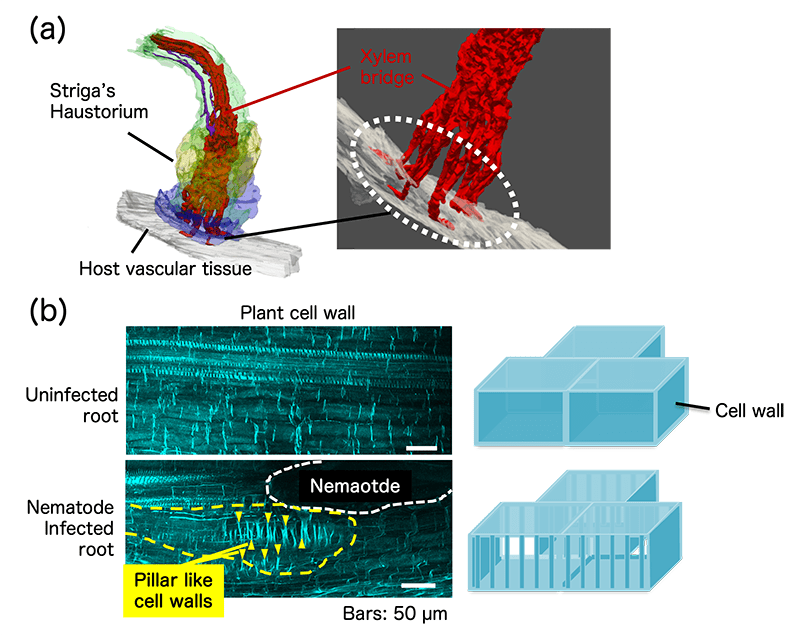2022.10.03
Interaction between plant and others
~How do invaders manipulate host plant tissues?~
Plant Symbiosis ・ Assistant Professor ・ Mina Ohtsu
Plants cannot move around unlike an animal. Thus, without running and hiding, they flexibility take in multiple stimuli from the outside or bravely battle with invaders. Our lab is interested in plants-others interaction (i.e. plant-plant, plant-microbe) and keen to know how the plant communicates with others and how invaders deceive and hijack host plant. Here, we introduce 2 topics focusing on the unique structures which invaders induce in their or host tissues. One of them is “haustoria”, it is a unique structure which plant parasitic plants form and use for the connection to host plant. There are xylem like structures in haustoria and they directly connect to host plant vascular tissues, resulting parasitic plants suck up the nutrient and water from host plant via haustoria. Another one is multinuclear “syncytia” which cyst nematodes, a kind of plant parasitic nematode, induce in host plant tissues for taking up nutrient from the host plant. To induce a big syncytium, the nematodes dissolve and remodel the host plant cell walls and then, fuse cells next to each other. Interestingly, parasitic plant and cyst nematode are, of course, completely different organism, but they form a special structure, haustorium or syncytium to get nutrients directly from host plants. We believe investigating both mechanism haustoria and syncytia formation lead us to understand plant-other interaction deeply and find a “secret” common strategy to manipulate host plants.
Mina Ohtsu NAIST Edge BIO, e0005. (2022).

